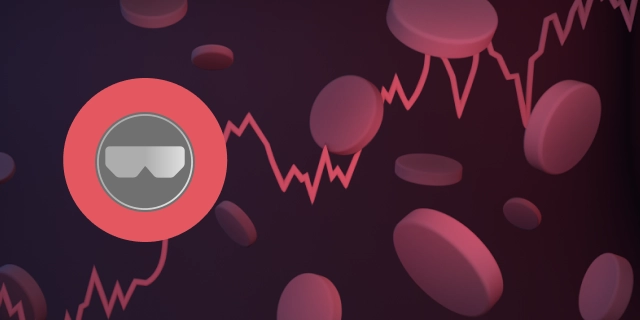Exchange Quant (QNT)
If you're looking to swap Quant, SwapSpace is your one-stop shop. We have some light reading for you — in case you'd like a refresher on what is Quant, or some fresh information about QNT’s price movements. And, of course, we provide you with multiple Quant exchange options so that you can choose the offer with the best rates and lowest Quant fees, as well as other parameters that suit you.
Quant Price Stats
To help you make a decision about exchanging your Quant, we gathered some cold hard numbers: Quant price chart and other stats, such as Quant market cap.

QNT 24H HIGH $109.29962678

QNT MARKET CAP $1,567,460,215.445

QNT CIRCULATING SUPPLY 14,850,043.872 QNT

QNT 24H LOW $103.06345376

QNT PRICE $105.55256462

QNT 24H VOLUME $2,004,722.119
SwapSpace Reviews
Quant Price Chart
Here you can see the current price of Quant, as well as Quant price history.
What is Quant?
Quant (QNT) is a cryptocurrency and blockchain project that operates at the intersection of the blockchain technology and traditional finance sectors. In today's landscape, organizations rely on a multitude of blockchain networks, each often constructed with unique coding languages and software development kits. These technical disparities frequently pose a formidable barrier when it comes to seamlessly connecting and exchanging data among distinct blockchain systems. However, Quant Network has set its sights on overcoming this challenge with its groundbreaking blockchain gateway, known as Overledger. The project is called the first OS for blockchains.
Overledger is a blockchain operating system that enables interoperability between different blockchains and networks. Overledger allows developers to build decentralized applications (dApps) that can seamlessly interact with multiple blockchains.
Quant is constructed atop the Ethereum blockchain while remaining seamlessly compatible with the Ethereum ecosystem and showcases a modular design within the application layer. This design is distinct in that it operates autonomously, avoiding the need for interfacing with multiple ledgers across various blockchains. Quant is positioned as an off-chain solution, characterized by its capacity for vertical scalability and a forward-looking approach, as highlighted by its developers.
The Quant Network was founded in 2015 by Gilbert Verdian. Gilbert Verdian is a cybersecurity and blockchain expert with extensive experience in the fields of technology and finance. He founded the Quant Network with the aim of addressing the challenges of interoperability between different blockchain networks and traditional systems, ultimately leading to the development of the Overledger blockchain operating system.
Quant Finance, short for quantitative finance, refers to the application of mathematical and statistical models to financial markets and risk management. The Quant project integrates blockchain technology into quantitative finance, aiming to bridge the gap between traditional financial systems and decentralized blockchain networks.
The Quant Network serves as the overarching infrastructure developed by the project. It's designed to foster interoperability among various blockchain platforms and traditional financial systems. The Quant network's primary goal is to enable secure and efficient data and asset transfers across different networks, thereby enhancing the synergy between "Quant crypto" and the broader financial landscape.
Quant goes beyond mere blockchain interactions; it establishes distinct layers for applications to engage with at varying levels. Within the Quant ecosystem, these layers encompass transactions, messaging, filtering, and ordering, as well as an application dedicated to the sharing and cross-reference of identical messages linked to other applications.
The Quant App Store extends its capabilities to read and monitor transactions spanning multiple ledger platforms. Through the utilization of Overledger, developers are empowered to craft smart contracts that extend their reach to an extensive array of blockchain networks, even including those that traditionally do not support such contracts, like Bitcoin. Moreover, developers can leverage the store to create and subsequently launch multi-chain applications (MApps), thereby expanding the scope of possibilities within the Quant ecosystem.
The Quant ecosystem revolves around the Quant Network and is powered by the QNT token, which is used for various purposes within the network. QNT serves as the native digital asset of the Quant network and plays a crucial role within the ecosystem. QNT can be traded on various cryptocurrency exchanges like other cryptocurrencies. It can be also used for various purposes within the Quant ecosystem, including facilitating transactions and powering smart contracts.
The Quant Network has forged strategic partnerships with various organizations and blockchain platforms. These partnerships aim to enhance interoperability and the adoption of blockchain technology in sectors such as finance, healthcare, and supply chain. Some notable partners included SIA, Ripple, and the UK National Health Service (NHS).
Within the Quant ecosystem, developers can create mApps (Multi-chain Applications) that leverage Overledger's capabilities to interact with multiple blockchains. These mApps can be tailored for various use cases, including cross-border payments, supply chain tracking, and more.
Quant's technology has been utilized for tokenization projects, which involve converting real-world assets into digital tokens on blockchain networks. This process can enhance liquidity and accessibility for assets such as real estate, art, and commodities.
Each client and developer within the network is obligated to acquire a license, and QNT serves as the currency for transaction payments. Notably, this involves a 12-month locking period for the tokens. The utilization of QNT tokens is essential to cover the expenses associated with operating the Gateways and executing read/write operations on the Overledger platform.
As of October 4, 2023, the total supply of the QNT is 14,881,364 tokens and the circulating supply is 12,072,738 QNT. The rest 2 million tokens are held by the company. The tokens are distributed as follows:
- 9.9 million QNT tokens were made available to the public during the Initial Coin Offering (ICO).
- 2.6 million QNT tokens were allocated to the company's reserve to sustain ongoing project operations.
- 1.3 million QNT tokens were reserved for the company's founders.
- 651,000 QNT tokens were issued to the company's advisors.
QNT tokens came into existence via a token generation event (TGE), commonly referred to as a crowd sale. The total supply of QNT is constrained by the number of tokens generated during the crowd-sale phase. Following the conclusion of the TGE on April 30, 2018, the platform has not generated any additional QNT tokens.
Quant tokens are readily available for purchase, sale, and trading across various reputable exchanges, which include Bilaxy, Bittrex, Bithumb Global, 1inch Exchange, Uniswap (V2), and Hotbit.
The average fees on the Quant network
Quant Network typically requires clients and developers to purchase a license to use their services. These licenses may come with associated costs (starting from about $150), and the specific fees can vary based on the type of license and the intended use case. Additionally, the use of QNT tokens is often required to pay for these licenses.
When using Quant's blockchain gateway, Overledger, for transactions across different blockchain networks, there may be transaction fees involved. These fees can vary depending on the blockchain being used and the complexity of the transaction. QNT tokens might also be required to cover these transaction fees.
If you are trading Quant (QNT) tokens on cryptocurrency exchanges, you may encounter exchange-specific fees. These fees can include trading fees, withdrawal fees, and deposit fees, which vary from one exchange to another.
The Quant token wallets
QNT tokens can be stored in various cryptocurrency wallets, including MyEtherWallet, MetaMask, Trust Wallet, Ledger Nano S, Ledger Nano X, Trezor, Exodus, Atomic Wallet, Coinomi, imToken, Eidoo, Enjin Wallet, Guarda Wallet, Infinito Wallet, Edge Wallet, Trustee Wallet, Magnum Wallet.
A Simple Way To Exchange Quant Here At SwapSpace

Choose a pair
Choose the cryptocurrencies you would like to exchange among more than 1850 coins and tokens. Pick them from drop-down menus. Type the number of coins you want to swap.

Select the best rate
You choose the rate – we do the magic! Pick up the exchange service by the rate which meets your requirements. Make sure you are okay with the selected service network fee and privacy policy: some of them require you to pass the AML/KYC procedure.

Transfer funds
Send the exact amount to the address provided and receive the crypto in your wallet within minutes. Don’t have a wallet yet? Our support will recommend a good one!

Receive your coins
You’ll get your coins in a few minutes! The exact time is a subject of various parameters such as blockchain network workload, transaction volume, our partners’ processing speed, etc. Concerned about your transaction? Check the swap tracker or feel free to contact the support: support@swapspace.co.



